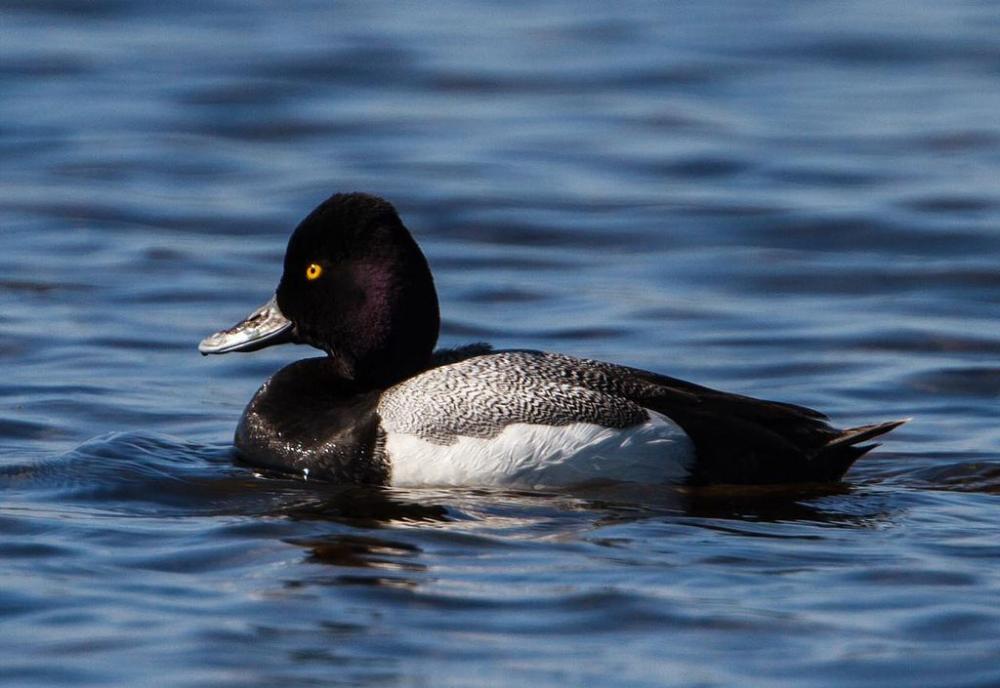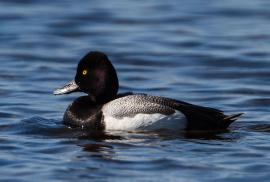Guide to Boreal Birds
Overview
Both the Lesser and Greater scaup are popularly called "Bluebills." Confined to the New World, the Lesser Scaup is thought to be descended from an earlier invasion of North America by the ancestor of both modern species of scaup. Here it evolved into a distinct species, to be joined later by a second arrival, the Greater Scaup, found in both hemispheres. In the northern states, where the Greater Scaup is more common in winter, the Lesser is often found in small parties on fresh water, while in the South it is seen in large flocks on lakes and salt water.
Description
15-18" (38-46 cm). Male has very light gray body, blackish chest, and black-appearing head. Similar to the Greater Scaup, but crown is higher and forehead steeper, giving the head a more angular appearance. Head of male glossed with purple, not green. Female dark brown with a small white face patch; not easily distinguishable from female Greater Scaup. In flight, white stripe is shorter than that of the Greater Scaup, which extends three-fourths of the wing's length.
Voice
Seldom heard; sharp whistles and guttural scolding notes.
Nesting
Usually 9-12 dark olive-buff eggs in a down-lined cup of grass hidden in vegetation, often located some distance from the edge of the water.
Habitat
Ponds and marshes; during migration and in winter it occurs on lakes, rivers, and ponds, and in the southern states on salt water.
Range/Migration
Breeds from interior Alaska and northern Canada south to Colorado and Iowa; occasionally farther east. Winters regularly along coasts south from British Columbia and Massachusetts to Gulf of Mexico; also inland south of Colorado and Great Lakes.



